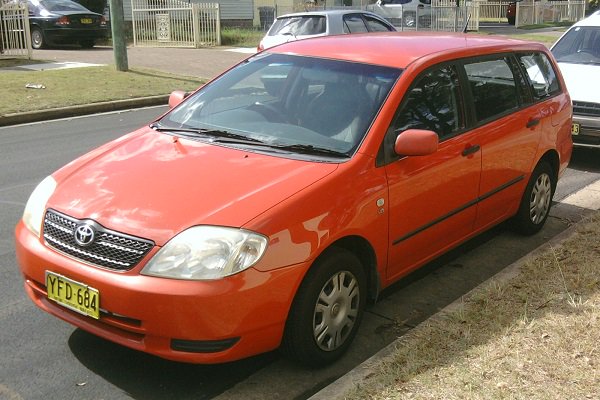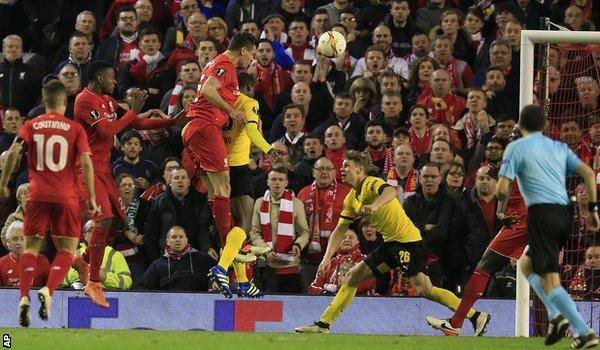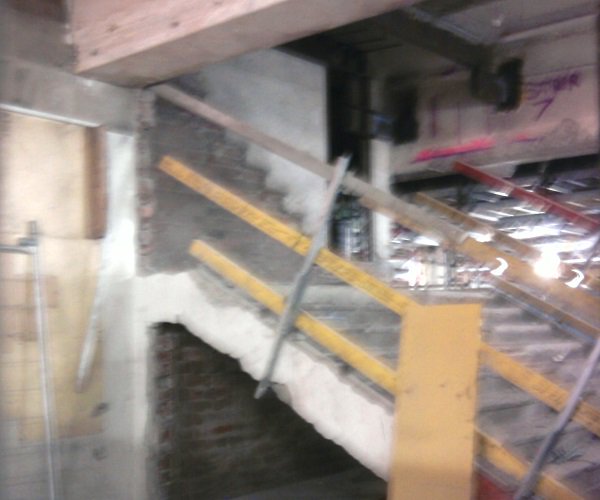The footballing significance of the 15th of April 1989, is nil. The significance of that afternoon which cut short the lives of 96 fans and affected their families, is immense.
On that fateful Saturday in mid spring of 1989, league fixtures were going on up and down the nation of England as they had done as normal. At Hillsborough Stadium though, the FA Cup tie between Liverpool and Nottingham Forest, had started but there was a disturbance behind the Liverpool end of the pitch, at the Leppings Lane end.
Football in England in the 1980s was in a bad way. Stadia which had been built in some cases up to a hundred years before, were simply inadequate for modern crowds. In most cases they had risen up out of small local grouds which had been developed by adding nothing more than terraces. They had been built in an era before most people had motor cars and in some cases, they had even been built before the invention of the motor car. This meant that the catchment of fans was now far larger than anyone had ever bothered to think of.
The earliest indication that something was amiss was in 1971 when a stand at the Ibrox Stadium in Glasgow collapsed during an 'Old Firm" game between Celtic and Rangers, but that was seen as a Scottish problem and so nothing was done.
Elsewhere though, the malaise of English football continued to rage on. At Bradford Stadium in 1985, there had been a massive fire, which started in a fish and chip shop underneath a stand. The subsequent enquiry found that there had been an accumulation of rubbish underneath the stand, which was easily ignitable and the stand itself which was made of wood and then had a roof which was waterproofed in pitch, had led to the fire, which became a flame front, quickly spreading across the stadium. Again, nothing was done because this was seen as a minor problem.
The rise of hooliganism in the early 1980s which coincided with Thatcher's privatisation of many manufacturing industries, was seen as a problem for football and the solution was simply to ignore it. When Liverpool played Juventus in the 1985 European Cup Final, Liverpool fans were seen charging at Juventus fans and in the panic, a wall collapsed in the Heysel Stadium in Belgium, killing many Juventus fans. Hooliganism came to be seen as a uniquely 'English Disease' and so all English teams were banned from European competition for ten years.
In the immediate season after English teams had been banned from Europe, Liverpool were no longer playing in those competitions, would go on to win the League and FA Cup Double in 1986, being only the fifth club ever to do so.
However sometime after Heysel, especially during the 1985-6 season, in order to protect their investment of their players, football clubs began to install very high containment fences.The theory was that with the fans kept behind the fences, that the English Disease wouldn't spread onto the pitch. Even fans themselves began to refer the areas behind the fences as 'pens' as though they were no more than livestock. Even though the clubs derived their income from the paying spectators who turned up week after week (often to see your and mediocre football in a lot of cases), they felt that they had no obligation to the fans and certainly no duty of care when it came to the issue of public safety.
The events of 15th of April 1989 happened at Hillsborough but the could have happened at any stadium in the country. By 1989, really the only stadia in the entire of the United Kingdom which was up to anything resembling modern stadium standards, was Manchester United's Old Trafford Stadium which had been redeveloped in the early 1970s. Not even Wembley Stadium which was the home of the FA Cup Final was particularly brilliant. It had been built in 1923 for the Olympic Games in London the following year. Fans were held in pens in crumbling stadia, more than fifty years old in most cases and it was only a matter of time before something like this would happen.
The match itself had been overbooked, since in those days there was no such thing as allocated seating and stadia only thought about how many tickets they could sell; not the consequences of overselling the ground. A crowd crush had started in narrow tunnels underneath the Leppings Lane end of the ground and because there were those heavy steel containment fences in place, the crush only became worse.
To alleviate the crush, ground staff opened a spill gate which had entirely the wrong effect and rather than fans exiting the ground, more of them began flooding into it. It soon became apparent though that this was a disastrous plan and as more and more people entered the ground, more people were literally crushed to death; that figure would finally rest at 96.
In the immediate aftermath, it was obvious that something terrible had happened but because this was still before the days of the internet and social messaging, the journalistic reporting of what had happened was still being done by telephone. News filtered through to other grounds that day and radio stations were able to tentatively report that there had indeed been a crowd crush but it was only when TV footage began to find its way to newsrooms that the public finally saw what had occurred.
The Sun newspaper went to print with its now infamous "The Truth" headline, and it accused fans of stealing from the dead and urinating on the police and ambulance staff. All of this was unfounded but it would take years for The Sun to issue a formal apology. Even so, some 27 years after the disaster, The Sun newspaper is still viewed with contempt in the city of Liverpool and if you buy a copy, you are still regarded with a hard stare and a great deal of derision from Liverpudlians.
But it was the way in which the enquiry into the disaster was handled which has really made people livid for the best part of three decades. Initially there was a cover-up by the Thatcher Government and the South Yorkshire Police, who preferred to look the other way and initially the blame for this was dissipated.
It has taken 27 years but finally the inquest into the Hillsborough Stadium Disaster has concluded that the 96 fans who died as a result of a crush were "unlawfully killed". Also, after 27 years, the South Yorkshire Police have officially acknowledged their part in the disaster when their Chief Constable admitted that they had got their policing "catastrophically wrong" and "failed the victims and failed their families".
The jury in the inquest of the Hillsborough Stadium Disaster found that the then commander of the South Yorkshire Police, was "responsible for manslaughter by gross negligence" due to a breach of his duty of care. This is in stark contrast to 27 years ago, when stadia and the police, tried to dodge the idea that they even had a duty of care.
What I find most amazing about all of this, is that the families of the victims have had to wait for this long for a proper inquiry to be held, must less for justice to finally be served and this in the face of a media who were hostile and a government and police who tried to rake over it.
After 267 days of evidence and after the jury had heard from 800 witnesses, the longest case heard by a jury in British legal history, was finally adjudicated on. Hopefully, we should finally see the beginning of closure for those long suffering families. It might have taken 27 years, but we finally have the beginning of justice for the 96.
Aside:
All 14 questions and answers:
Do you agree with the following statement which is intended to summarise the basic facts of the disaster: “Ninety-six people died as a result of the Disaster at Hillsborough Stadium on 15 April 1989 due to crushing in the central pens of the Leppings Lane terrace, following the admission of a large number of supporters to the Stadium through exit gates.”
YES
Was there any error or omission in police planning and preparation for the semi-final on April 15, 1989, which caused or contributed to the dangerous situation that developed on the day of the match?
YES - “The jury feel that there were major omissions in the 1989 operational order, including specific instructions for managing the crowd outside the LL turnstiles, specific instructions as to how the pens were to be filled and monitored, specific instructions as to who would be responsible for the monitoring of the pens.
Was there any error or omission in policing on the day of the match which caused or contributed to a dangerous situation developing at the Leppings Lane turnstiles?
YES - The jury said: “Police response to the increasing crowds at Leppings Lane was slow and uncoordinated. The road closure and sweep of fans exacerbated the situation.” They said no filter cordons were used, no contingency plans made and atempts to close perimeter gates were too late.
Was there any error or omission by commanding officers which caused or contributed to the crush on the terrace?
YES - The jury said: “Commanding officers should have ordered the closure of the central tunnel before the opening of gate C was requested as pens three and four were full.” They said commanding officers should have asked for figures and failed to recognise pens were at capacity.
When the order was given to open the exit gates at the Leppings Lane end of the stadium, was there any error or omission by the commanding officers in the control box which caused or contributed to the crush on the terrace?
YES - The jury said: “Commanding officers did not inform officers in the inner concourse prior to the opening of gate C.” They said they failed to consider where fans would go and to consider the closure of the tunnel.
Are you satisfied, so that you are sure, that those who died in the disaster were unlawfully killed?
YES - majority decision (7-2)
Was there any behaviour on the part of the football supporters which caused or contributed to the dangerous situation at the Leppings Lane turnstiles?”
NO - They were asked if behaviour may have caused or contributed.
Were there any features of the design, construction and layout of the stadium which you consider were dangerous or defective and which caused or contributed to the disaster?
YES - The jury said: “Design and layout of the crush barriers in pen three and four were not fully compliant with the Green Guide.” They said the lack of dedicated turnstiles meant capacities could not be monitored and there were too few turnstiles. Signage to the side pens was inadequate.
Was there any error or omission in the safety certification and oversight of Hillsborough Stadium that caused or contributed to the disaster?
YES - They said the safety certificate was never amended to reflect changes at the Leppings Lane end. The capacity figures were incorrectly calculated and the safety certificate had not been reissued since 1986.
Was there any error or omission by Sheffield Wednesday and its staff in the management of the stadium and/or preparation for the semi-final match on April 15, 1989, which caused or contributed to the dangerous situation that developed on the day of the match?
YES - The jury said: “The club did not approve the plans for dedicated turnstiles to each pen.” The club did not agree contingency plans with police and there was inaccurate information on the tickets.
Was there any error or omission by Sheffield Wednesday and its staff on April 15, 1989, which caused or contributed to the dangerous situation that developed at the Leppings Lane turnstiles and in the west terrace?
NO - They were asked if any error or omission MAY have contributed or caused the dangerous situation. They answered YES. The jury said: “Club officials were aware of the huge numbers of fans still outside the LL turnstiles at 2.40pm. They should have requested a delayed kick off at this point.
Should Eastwood and Partners (structural engineers) have done more to detect and advise on any unsafe or unsatisfactory features of Hillsborough Stadium which caused or contributed to the disaster?
YES - They said: “Eastwoods did not make their own calculations when they became consultants for Sheffield Wednesday FC.” They said calculations were incorrect and Eastwoods failed to recalculate capacities and update the safety certificate after 1986. They said Eastwoods failed to recognise the removal of crush barriers could create a dangerous situation.
After the crush in the west terrace had begun to develop, was there any error or omission by the police which caused or contributed to the loss of lives in the disaster?
YES - They said the police delayed calling a major incident. There was a lack of communication, coordination and command and control.
After the crush in the west terrace had begun to develop, was there any error or omission by the ambulance service (SYMAS) which caused or contributed to the loss of lives in the disaster?
YES - They said ambulance officers at the scene failed to ascertain the nature of the problem and the failure to call a major incident led to delays in responses to the emergency.
All verdicts were
unanimous, bar question 6.





